70 Years in the Making
Imagine building a monument so large, that after SEVEN decades it still wasn’t complete. Sounds crazy right? Well, Crazy Horse that is!
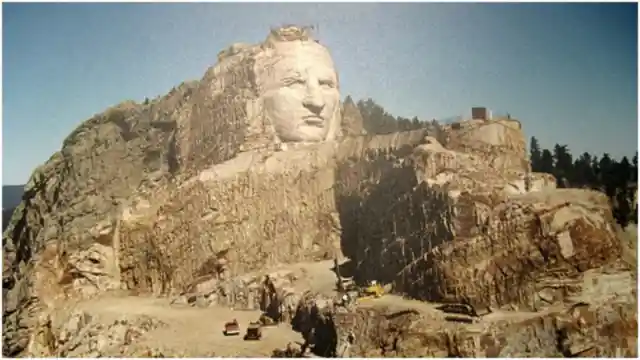
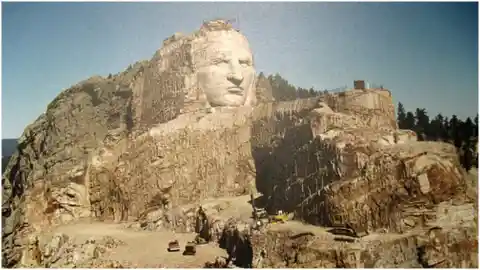
The Crazy Horse Memorial in the Black Hills of South Dakota has been under construction for the past 70 years, and while it’s open to tourists, the 87-foot-tall monument is still a long ways off from being finished. How could that be?
Who Was Crazy Horse?
Oglala Lakota aka “Crazy Horse” was born in 1849 and is known for being a famous war leader who fought in the Battle of the Little Bighorn, as well as many other significant battles during the American Indian Wars.

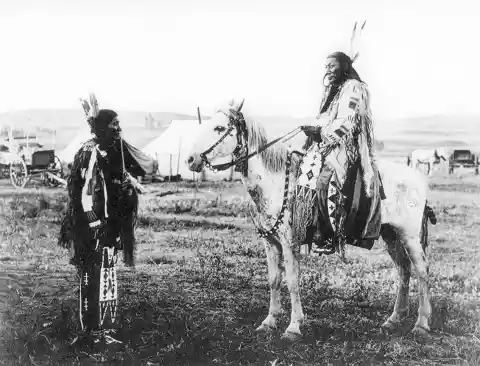
A powerful warrior, visionary and freedom fighter, he worked hard to free his people and fight against the U.S. government seeking to take their land.
Ethnic Cleansing
During this time, the Native Americans were being forced from their land and killed. Many tribes fought back, which triggered the wars.


Crazy Horse would see visions of the future that he would relay to Chief Sitting Bull. Sadly, Crazy Horse would not live to see his dreams become a reality.
His Final Vision
“The Red Nation shall rise again, and it shall be a blessing for a sick world. A world filled with broken promises, selfishness, and separations. A world longing for light again.


I see a time of seven generations when all the colors of mankind will gather under the sacred Tree of Life and the whole Earth will become one circle again.”
Crazy Horse would die four days later…
A Legacy Honored
Known for his wisdom and mission of peace between all people who shared the land in the United States, Crazy Horse’s legacy continues to be an inspiring piece of history. So, it makes sense that he would be honored with a monument that would be a symbol of all the great work he did during his lifetime.
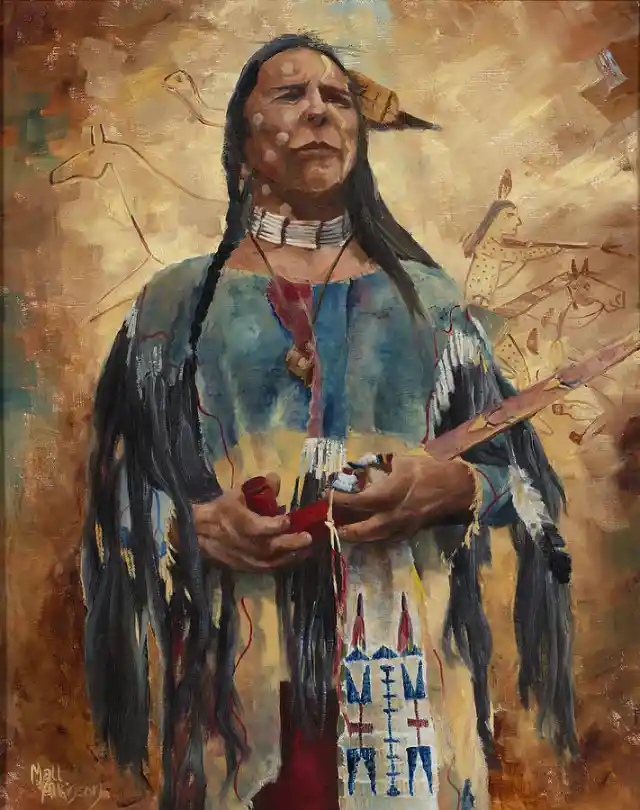

Unfortunately, the people who planned it bit off more than they could chew and after all this time it still sits unfinished. Some estimate it could still take another 100 years to complete.
The Oglala Lakota
Located only 40-miles from the memorial’s location is where Crazy Horse was born. A member of the Oglala Lakota tribe, they were one of the seven tribes of the Sioux Nation. During the 1800’s white trappers and hunters began to expose the tribe to their ways.
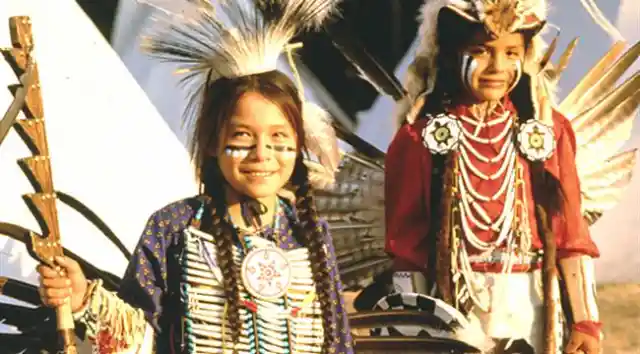
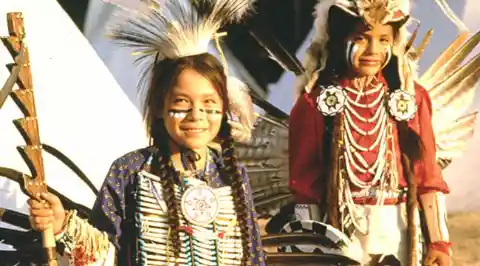
This would eventually lead to the federal government dividing their land. Some resisted, others surrendered. It was a very confusing and hurtful time for the tribe.
Quiet and Thoughtful
Before he became a warrior, Crazy Horse was known as “Curly” due to his long, wavy hair. Historians state that he was known to be a quiet and thoughtful child who enjoyed growing up on the prairies.
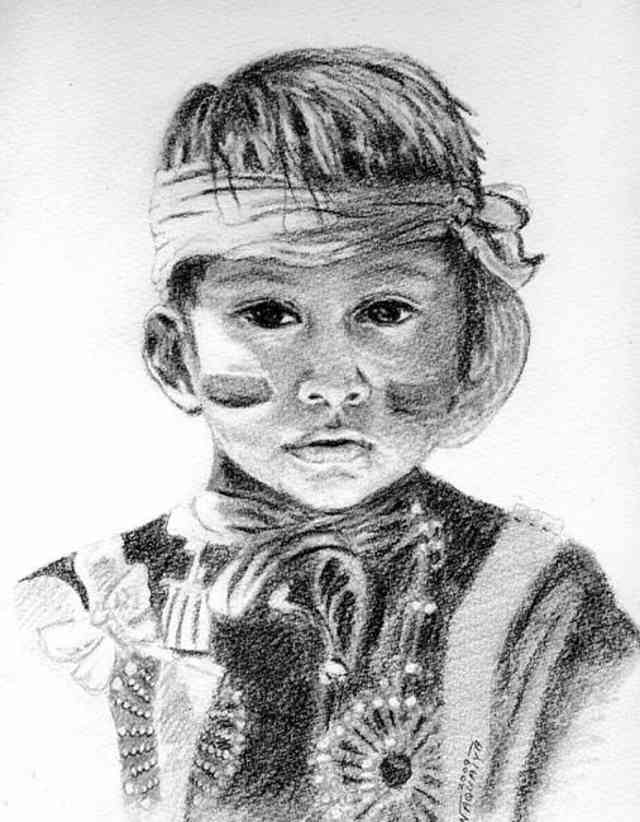
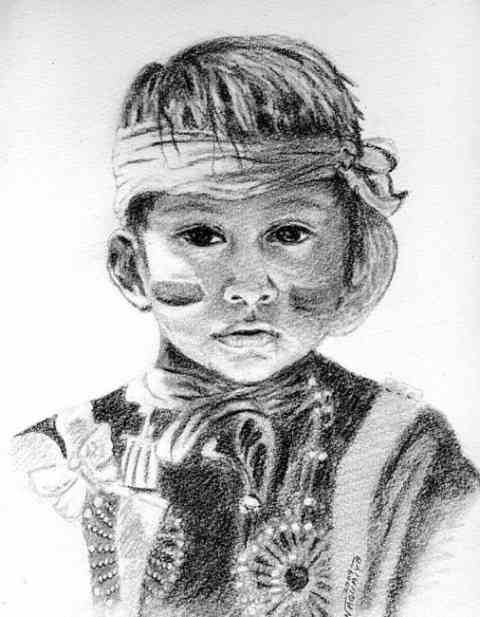
At the age of five, he was not only a proficient horseback rider, but he knew how to wield bows and tomahawks as well.
A Terrible Murder
When Crazy Horse was only 12-years-old, he witnessed the murder of his chief, Conquering Bear by U.S. troopers. The tribe attacked in retaliation and over 30 soldiers were killed.

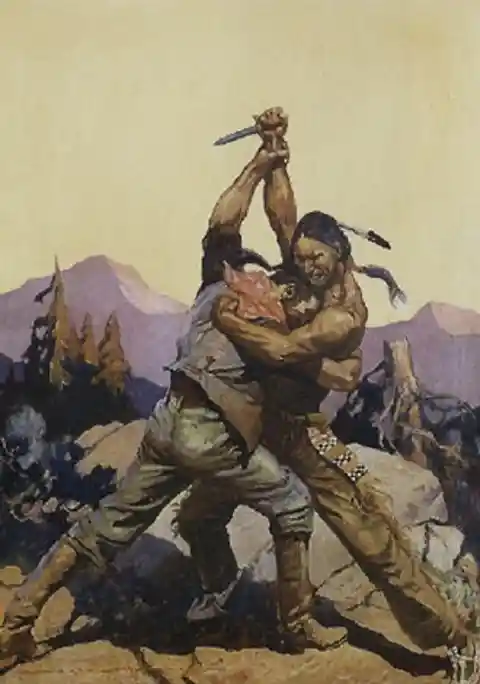
After this incident, Crazy Horse began to see visions, something his tribe elders encouraged.
Vision Quest
As the visions intensified, Crazy Horse embarked on a rite of passage known as a “vision quest.” This involved venturing into the wilderness alone without food and water.
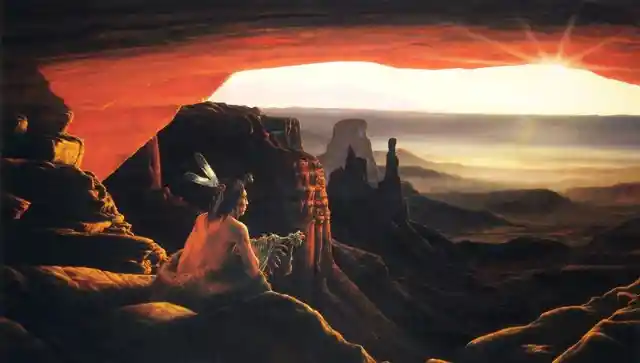

This would last up to four days. It was during this vision quest that Crazy Horse saw a future where his people would live in peace. However, before that time would come, there would be a period of great bloodshed.
A Great Warrior Among Men
Through his teen years, Crazy Horse developed into one of the most skilled warriors of the tribe. His visions brought hope when all seemed lost and he succeeded in defeating many U.S. troops in epic, widescale battles.
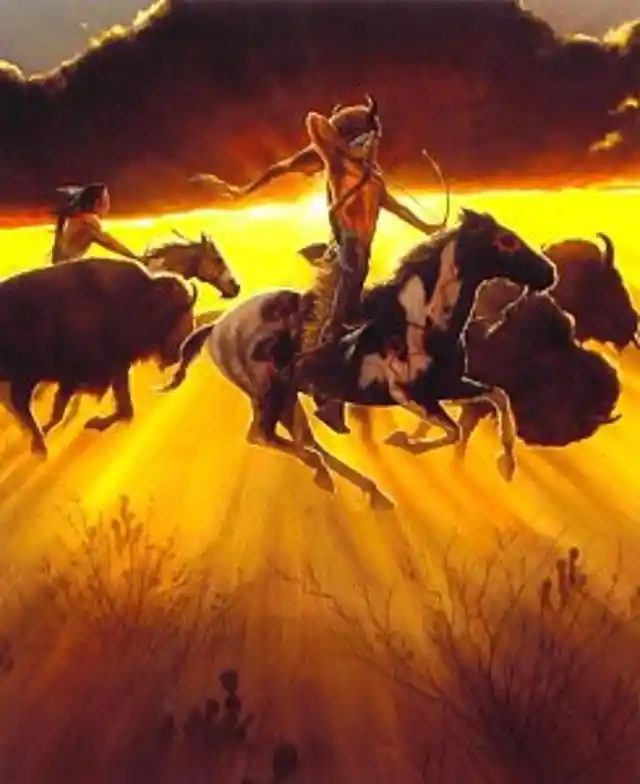
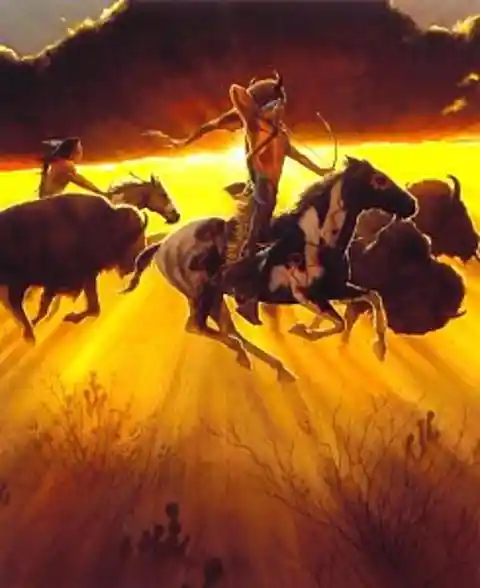
Some historians even believe he was the one who killed General George A. Cluster during the Battle of Little Big Horn.
Death in 1877
The day of his death, Crazy Horse had been negotiating at Fort Robinson with the U.S. military, but an inaccurate translation by the interpreter gave the perception to the authorities that he was a threat.

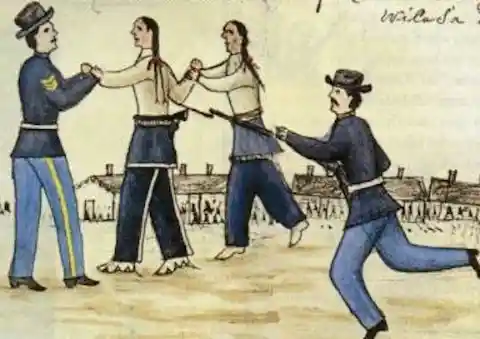
The troops tried to escort him to the jail, but Crazy Horse pulled a knife which resulted in him being mortally wounded by an infantry guard. He died only hours later.
The Memory Lives On
In 1939, Chief Henry Standing Bear of the Oglala Lakota commissioned Polish-American sculptor, Korczak Ziolkowski to construct a large monument in honor of Crazy Horse.
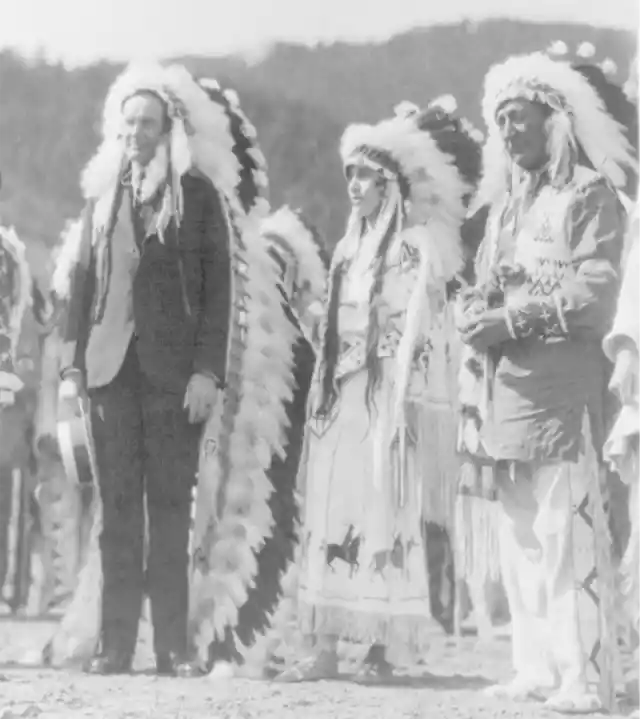

He told the sculptor, “My fellow chiefs and I would like the white man to know that the red man has great heroes, too.”
Delusions of Grandeur
Unfortunately, Chief Standing Bear wanted a monument that was just not realistic in size and scope. He wanted the stone monument to be larger than the iconic four presidents at Mount Rushmore.
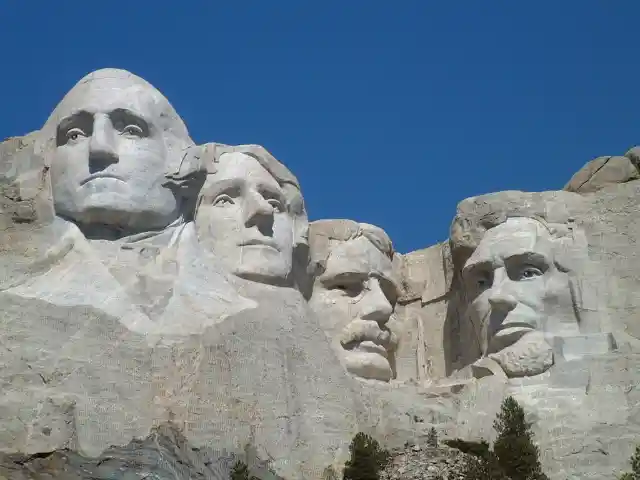

Fortunately for Standing Bear, Ziolkowski dreamed big and was excited to help bring his vision to life.
A Sacred Space
Construction on the Crazy Horse Memorial didn’t begin until 1948. It’s located 17 miles from Mount Rushmore on private land in South Dakota.
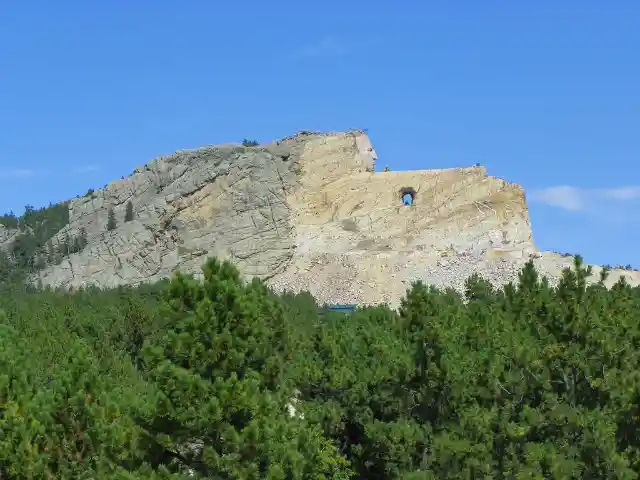
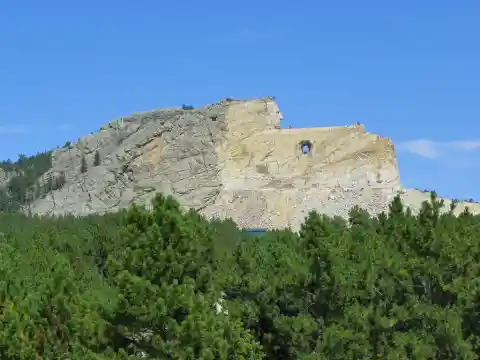
The gigantic monument is being carved from Thunderhead Mountain, a place of sacred significance to the Oglala Lakota people. Sadly, it is unknown if it will ever be completed.
The Proposed Design
The original design for the monument was supposed to show Crazy Horse riding a stallion with his arm outstretched. If ever completed, the memorial would be 563 feet tall and over 641 feet in length.

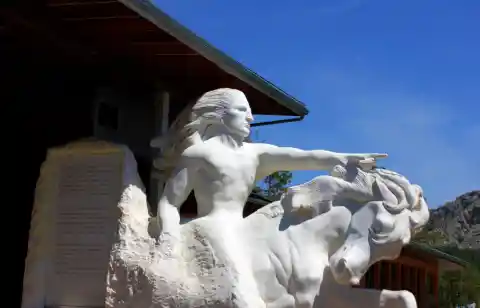
Currently, Crazy Horse’s face is all that has been completed at this time and is 27 feet taller than the heads of Mount Rushmore.
No End Date In Sight
If the monument is ever completed, it will be the largest statue in the world, which is currently “The Motherland Calls” in Russia.
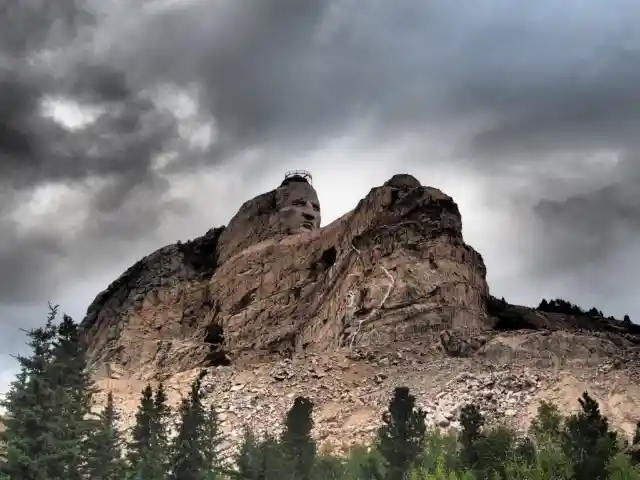
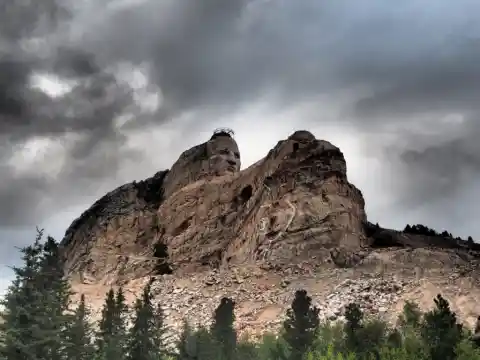
Sadly, after all this time the monument still is nowhere close to being done and the sculptors refuse to commit to an end date for the construction.
Wishing It Moved Faster
Ruth Ziolkowski, the wife of the sculptor, revealed she would love for the construction to go faster. She assumed the responsibility of the memorial after his death in 1982.
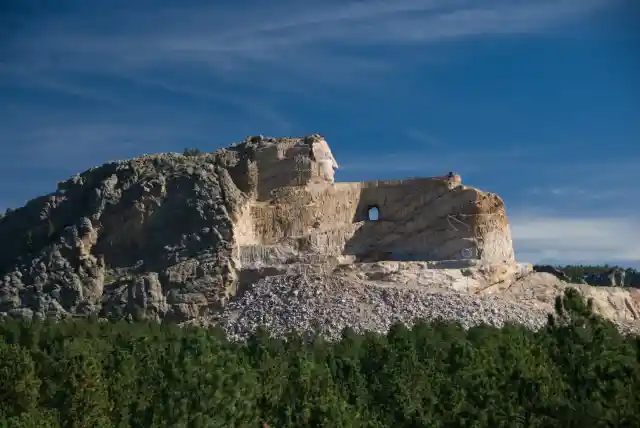
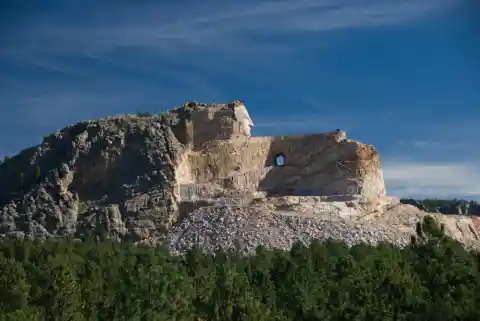
“There are so many things that you have to do in order to do it right that it takes the time… [Korczak told me to] ‘go slowly so you do it right.’”
Under New Guidance
To Ruth’s credit, the memorial actually made the most progress under her direction. While her husband wanted to carve out the horse first, she chose to focus on Crazy Horse’s face.
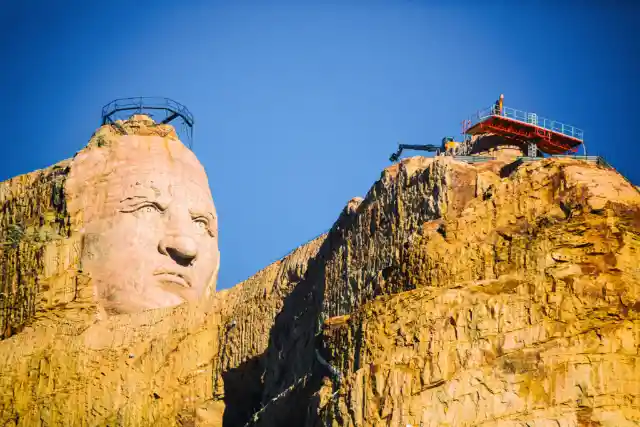
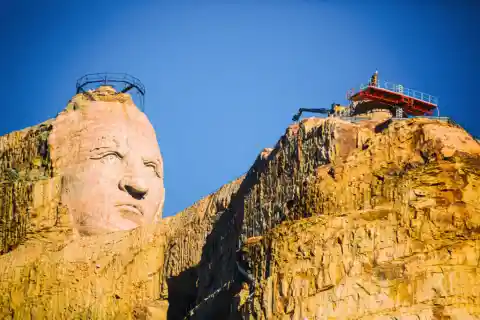
The face was completed in 1998, which allowed for the memorial to open to the public and begin to generate revenue from tourists. Currently, the monument is visited by over a million visitors each year.
Turning to New Solutions
Sadly, Ruth died in 2014 and many wondered what would become of the monument. Thankfully, her daughter Monique has stepped up to the plate to finish the family legacy. She’s looking for new solutions to speed up the process and make it more efficient.
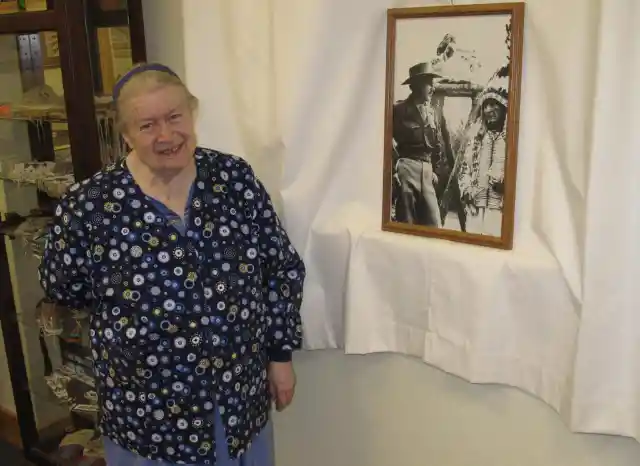

“My father always said you had to work with Mother Nature because she’ll beat you every time,” she told NPR. “So that’s why we’re working with the engineers, and we will be putting in bolts for support…”
Tribe Pushback
Unfortunately, not everyone is on board with the monument because no one asked members of the tribe if they could carve into the Black Hills, which they consider very sacred.

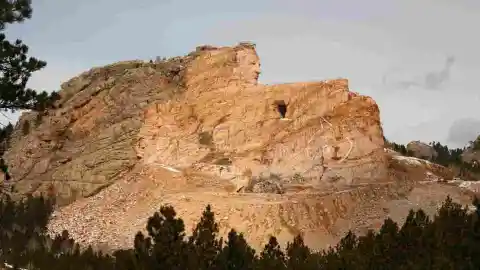
“They were there for us to enjoy, and they were there for us to pray. But it wasn’t meant to be carved into images, which is very wrong for all of us,” said Elaine Quiver, a descendant of Crazy Horse.
Those against the construction may not have to worry much longer because, with no end date in sight, the monument may never be finished. Since funding comes from donations and tourism, there isn’t enough cash on hand to continue on the monument consistently.